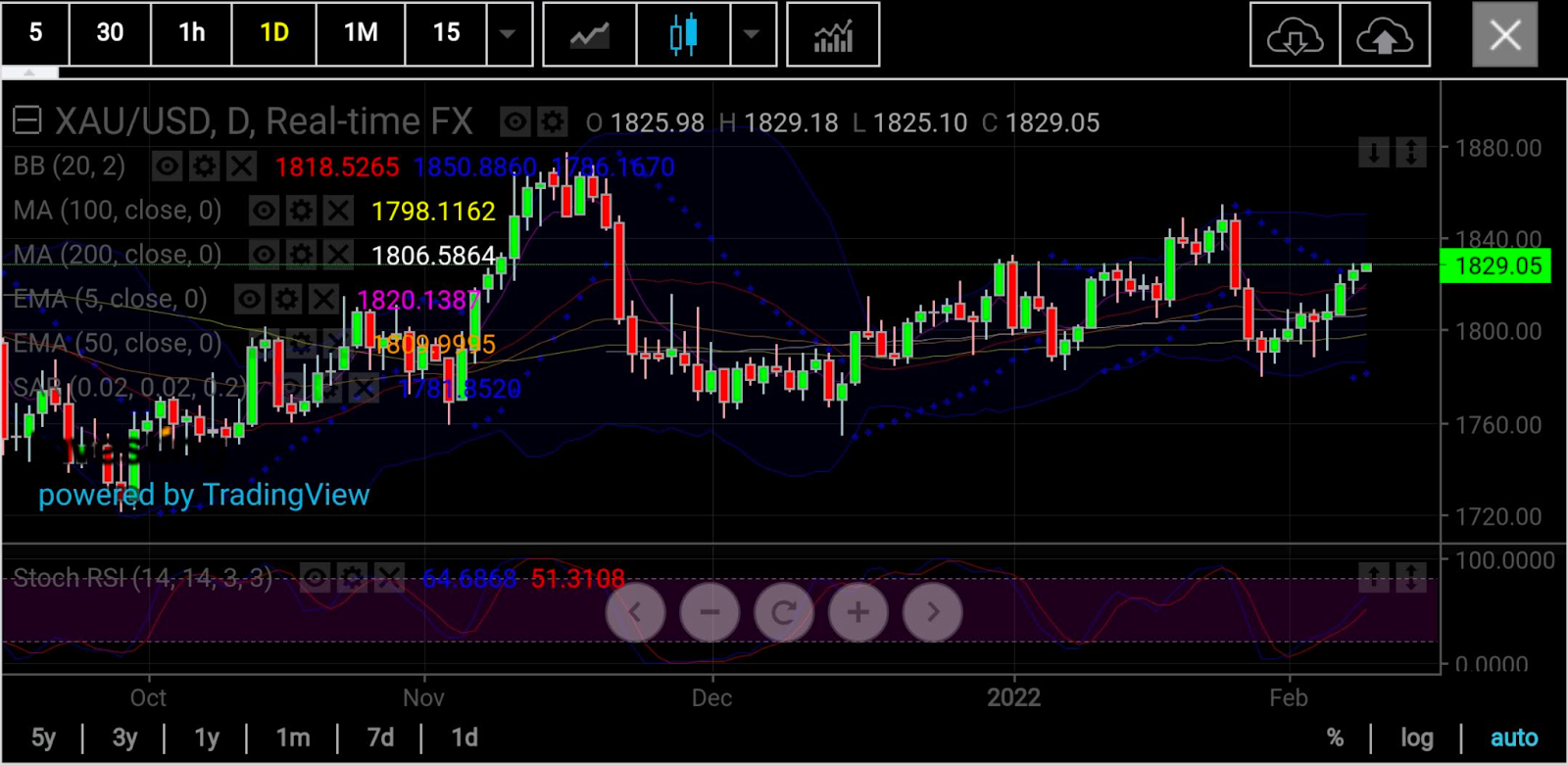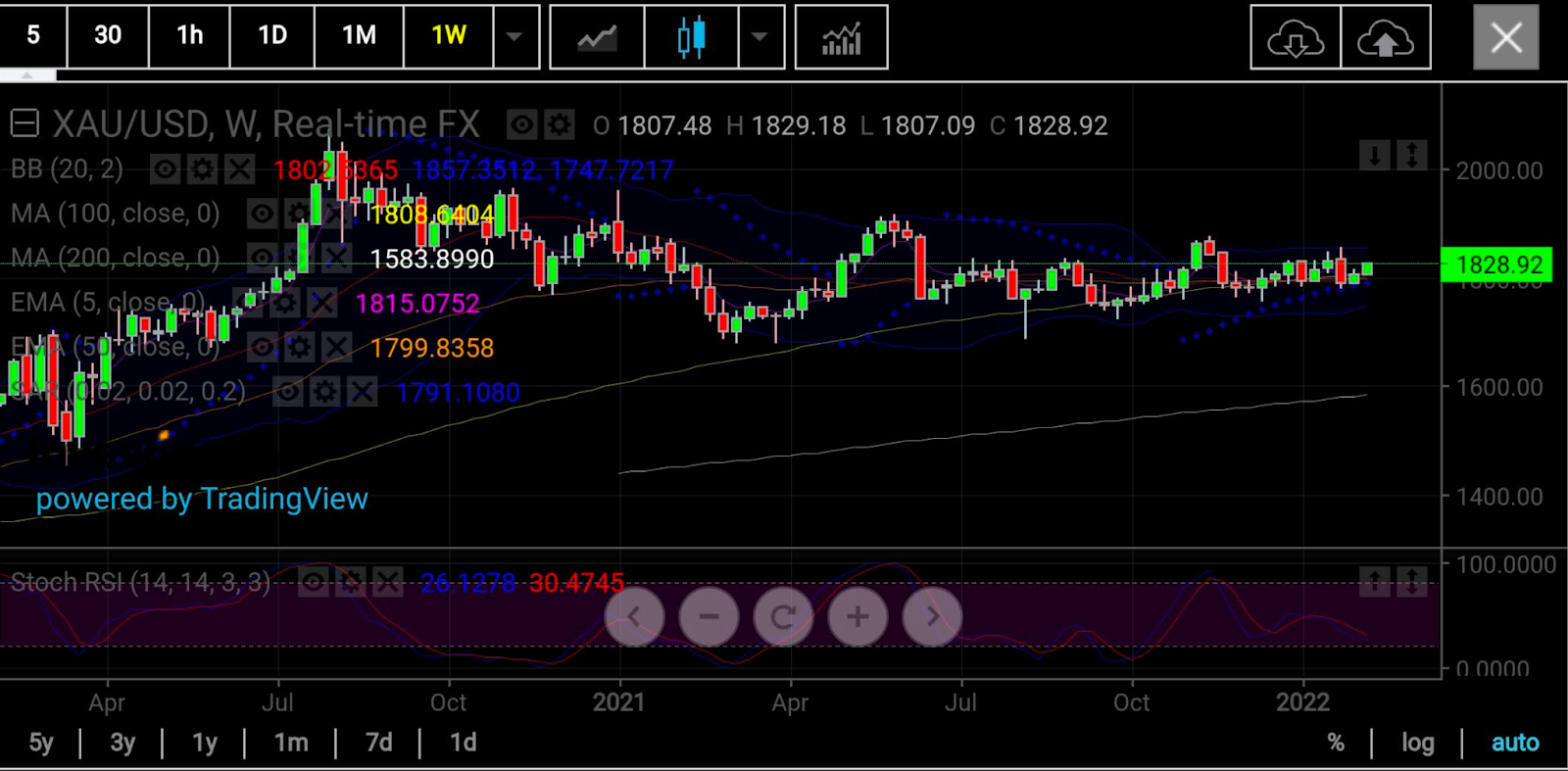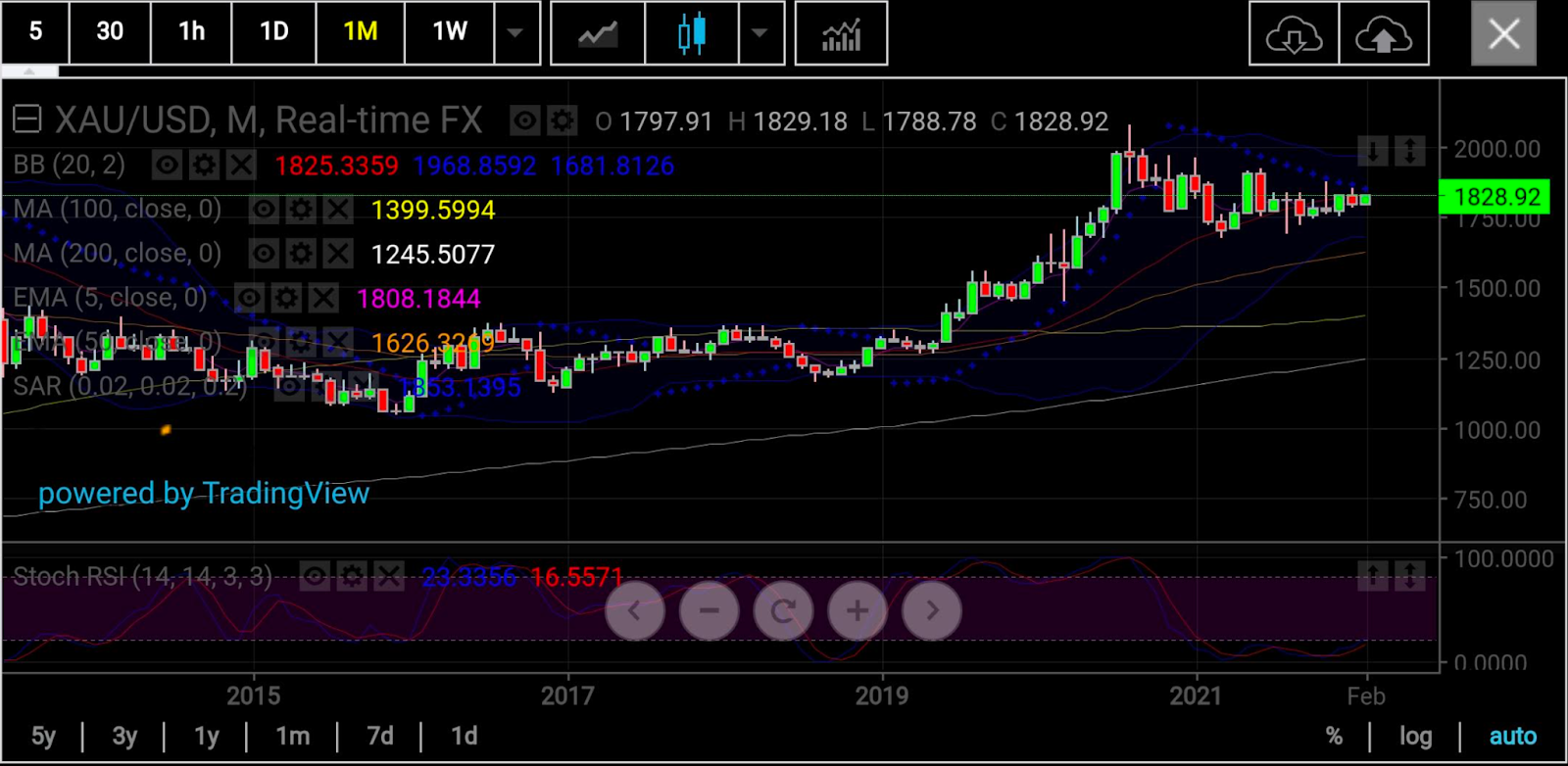Oh, CPI, CPI, what will yer bring?
Thursday’s much-anticipated US Consumer Price Index for January could mean different things for different markets.
An annual reading below the forecast 7.3%—say, as low as December’s 7.0%—could pare interest rate expectations, melt down bond yields now at more than 2-year highs and calm the worst fears of stock punters, causing the S&P 500 and Dow to fly. Any reading that’s sharply higher could be another dose of kryptonite for high-valued stocks on NASDAQ, already down almost 10% on the year.
Where gold fits between the two extremes is a good guess.

Charts courtesy of skcharting.com
By its very asset definition, gold is an inflation hedge and should rally when price pressures get out of control, as reflected by, say, an annual CPI reading of 7.5% or above for January.
The trouble with that theory—as witnessed for months now—is that any major tick-up in inflation triggers a bond selloff that first sends the yield on the US 10-year Treasury note and the dollar rocketing. The combination of the two is usually a death knell for gold.
A week ago, I asked Gold Gets Another $1,800 Lifeline, But Will It Survive US Jobs Report?
Well, gold did survive that jobs report, which showed an addition of 467,000 positions for January versus economists’ expectations for a growth of just 125,000.
After staggering unemployment triggered by the outbreak of the coronavirus in 2020, the labor market has picked up, with the US jobless rate falling to 3.9% in December and steadying at 4.0% last month, from a record high 14.8% in April 2020. A jobless rate of 4.0% or lower is defined by the Federal Reserve as “maximum employment” in America.
The US economy itself grew 5.7% last year from a 3.5% contraction in 2020. But inflation grew even faster, with the 7% annual rise for December being the highest since 1982.

The Fed has a dual mandate of growing jobs and keeping inflation under control. So a combination of high jobs growth, high inflation and a strong economy is usually a recipe for high interest rates. And high interest rates are great for yields and the dollar, not gold.
Money markets expect the Fed to hike rates as many as five times between the March and November monthly meetings. What’s unknown is the size of the hikes. As of last week, the expectation was that the Fed will get the ball rolling with a 25-basis point increase in March.
If Thursday’s CPI growth is overwhelming, it most likely will send yields and the dollar rallying first and gold will probably plunge, reacting to those two. The yellow metal could take a day or two to reassert its standing as an inflation hedge and only then, it might rally, that too in measured moves.
Why?
Because a strong CPI could even prompt the Fed to commit to a 50-basis point hike in March. That could be real kryptonite for gold. But the prospective rate hike is five weeks away, and the more pressing question is where gold will sit between now and then.

Despite multiple calls for its doom since the start of the year due to expected US interest rate hikes, gold has managed to cling to the key bullish $1,800 levels for most of the past five weeks. Even on its break lower, it only went down as far as $1,778.80.
One reason for that is the geopolitical tensions associated with the Russia-Ukraine conflict, said some analysts.
In Tuesday’s trade on New York’s COMEX, gold futures’ most active contract, April, settled at $1827.9 an ounce.
The peak of the day, interestingly, was $1,830.15—technically a "very safe" point just below the higher resistance levels identified for the yellow metal, according to Sunil Kumar Dixit, chief technical strategist at skcharting.com.
“Gold's recovery shows that it’s back with a vengeance and it now sits above the 50% and 61.8% Fibonacci levels of $1,817 and $1,825, respectively, of the $73 retracement measured from the $1,853-$1,780 level,” Dixit said.
“This comes as gold is supported by the 'Georgia on My Mind' theme from the buildup in Russia-Ukraine tensions that’s haunting NATO.”
The 50% and 61.8% Fibonacci levels were already considered technical positions of strength that could lead to further highs (76.4% at 1836 in this case) and retest of this year’s $1,853 top, he said.
“If the current upward momentum gains enough volume support, gold is likely to test $1,860, which is next critical resistance and even retest higher to reach $1,877,” Dixit added.
“On the flip side, failure to hold above $1,817 may trigger a pull back to $1,808-$1797 very quickly. Gold badly needs a decisive trigger for breaking through $1,830-$1,835, without which bears are going to maul the bulls again.”
As for CPI expectations, he said a marginally higher annual reading was already priced in by gold longs for January—meaning the forecast 7.3% growth might actually be good for gold.
“Substantially higher inflation with elevated Russia-Ukraine fears may trigger further a bullish move towards $1,853-$1,877, maybe not right away but eventually. Otherwise, it could be a flop show.”
Disclaimer: Barani Krishnan uses a range of views outside his own to bring diversity to his analysis of any market. For neutrality, he sometimes presents contrarian views and market variables. He does not hold a position in the commodities and securities he writes about.
